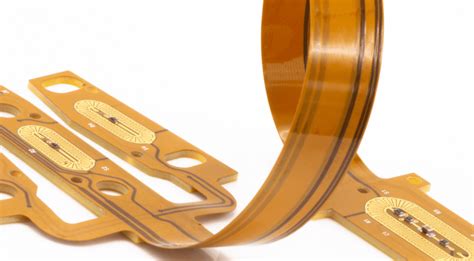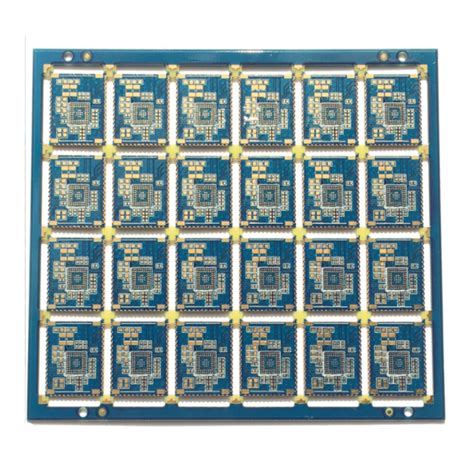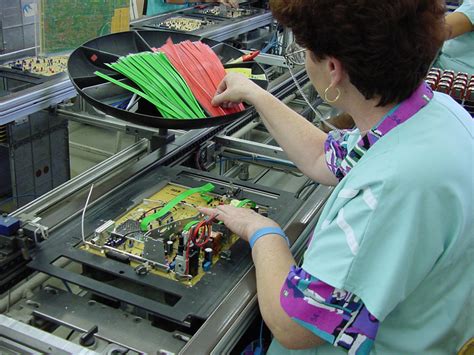Efficient Solutions for Small Run PCB Assembly Projects

Key Takeaways
In navigating the realm of small run PCB assembly, it is crucial to grasp the fundamental concepts that define pcba processes. Small run pcb assembly involves producing a limited quantity of printed circuit boards, emphasizing the need for efficiency and quality. By implementing effective strategies, organizations can optimize their production processes, ensuring that each step is conducted with precision and care. Key considerations include identifying the right tools and technologies that facilitate streamlined workflows, thus reducing turnaround times while maintaining high standards.
Furthermore, cost-reduction techniques play a pivotal role in these projects. By understanding the specific demands associated with small runs, businesses can make informed decisions that balance quality with budgetary constraints. Emphasizing best practices ensures that every component meets stringent quality benchmarks, leading to successful outcomes. Overall, the ability to adapt to common challenges faced in small run PCB assembly will greatly enhance project success rates and lead to innovative solutions tailored for future developments in this field.
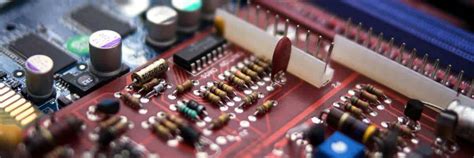
Understanding Small Run PCB Assembly: Key Concepts and Definitions
In the realm of PCB assembly (often referred to as PCBA), small run projects play a crucial role in niche markets and prototyping. A small run typically refers to production volumes that are lower than what is considered standard in mass manufacturing. Understanding the core concepts surrounding this type of assembly is essential for any company looking to optimize their production processes. Flexibility is one of the defining characteristics of small run PCB assembly. It allows for rapid iteration and modifications based on immediate feedback, which is often vital in sectors where technology evolves swiftly.
A significant factor that distinguishes small run PCBA from larger-scale production runs is the emphasis on managing costs while still maintaining quality. Companies must navigate the balance between sourcing high-quality materials and utilizing advanced yet cost-effective assembly techniques. Moreover, things such as automated machinery, manual soldering, or even selective soldering can be tailored to fit a small size requirement effectively.
To aid in this endeavor, understanding the language of PCB assembly will enhance communication among teams and lead to improved outcomes. Key terms such as silkscreen, vias, and component placement become pivotal in ensuring that all stakeholders are aligned with the project’s goals.
"In every small run project, maintaining clarity within your team can drastically improve efficiency and result in superior outputs."
This focus on communication underscores how critical it is to delve into comprehensive planning before execution. Additionally, leveraging technology tools like specialized software for design verification can further streamline the PCB assembly process in small runs. As you embark on such projects, recalling these foundational concepts will provide a roadmap towards achieving successful outcomes while navigating the unique challenges that these smaller productions entail.
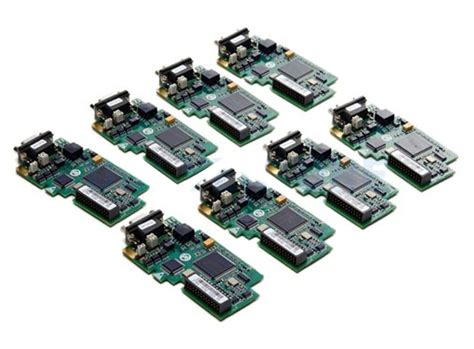
Strategies for Optimizing Production Processes in Small Runs
To achieve efficient PCB assembly in small runs, several strategies can be employed to enhance production processes. First and foremost, it is crucial to minimize setup times by employing flexible manufacturing systems that allow for quick adjustments between different projects. Utilizing automated and semi-automated equipment can drastically reduce the time required for repetitive tasks, making production more agile and responsive to varying demands.
Another essential tactic is to leverage design for manufacturability (DFM) principles during the initial design phase, which helps eliminate potential complications down the line and aids in smoothing the assembly process. This focus on pcba design not only improves manufacturability but also optimizes performance and reliability.
Implementing a robust inventory management system is also necessary to ensure that essential components are readily available without the need for excessive stockpiling. This balance helps in maintaining cost efficiency while avoiding production delays caused by material shortages.
Furthermore, maintaining a close relationship with suppliers allows for better communication regarding material availability and lead times, ensuring that any potential delays are identified early on. Continuous training of staff on the latest techniques and tools ensures that every member involved in the pcb assembly process is equipped with up-to-date knowledge, ultimately leading to fewer errors and higher quality output.
In summary, embracing an agile approach combined with innovative design practices and efficient resource management will not only optimize your production processes but also significantly enhance the overall success of small run PCB assembly projects.
Cost-Reduction Techniques for Small Run PCB Projects
Reducing costs in small run PCB assembly projects can significantly influence the overall success and sustainability of your operations. One effective approach is to optimize the selection of components for the PCBA process. By choosing cost-effective yet reliable components, businesses can maintain a balance between quality and expenses. Additionally, leveraging advanced software tools for design and simulation can minimize errors during fabrication, which often lead to costly reworks. Implementing efficient procurement practices, such as bulk purchasing for commonly used materials, can also drive down costs without compromising on quality.
Another key technique involves streamlining your pcb assembly processes by adopting modular assembly techniques that allow for flexibility and faster turnaround times. Using standard platforms or assembly frameworks can simplify procurement and production logistics, further enhancing cost efficiency. Finally, collaborating closely with suppliers to negotiate better terms or exploring local production options can also contribute to reducing transportation costs and lead times in small run PCB assemblies. These strategies collectively support achieving cost-effective outcomes while ensuring high standards in the production of PCBA projects.

Ensuring High-Quality Outputs: Best Practices
When engaging in small run PCB assembly, ensuring high-quality outputs is vital for the success of your project. The first step towards achieving this is to select the right materials and components, as the quality of these inputs directly influences the performance and reliability of the final PCBA. Once the materials are established, meticulous attention to detail during assembly is essential. Implementing stringent quality control measures throughout the process can help identify defects early. Utilizing skilled technicians who are well-trained in pcb assembly techniques can further enhance quality assurance. Additionally, leveraging advanced technologies such as automated soldering and testing equipment can minimize human error and guarantee consistent results. Regularly reviewing and optimizing your production processes will also contribute to sustaining high-quality standards. Ultimately, creating a culture that prioritizes quality at every stage, from initial design through final inspection, is indispensable in achieving exemplary outputs in small run PCB assembly projects.
Streamlining Your Assembly Workflow: Tools and Technologies
In the realm of pcb assembly, effectively managing the workflow is crucial for the success of small run pcba projects. Leveraging advanced tools and technologies can significantly enhance efficiency and minimize errors during the assembly process. One key approach is employing automated assembly equipment which can speed up production times while maintaining accuracy. Additionally, implementing software solutions for design, simulation, and testing can help identify potential issues early in the workflow, thereby reducing rework costs.
To illustrate the benefits of these technologies, consider a table outlining common tools and their roles in streamlining pcb assembly:
| Tool/Technology | Functionality | Benefits |
|---|---|---|
| Automated Pick-and-Place Machines | Automates component placement | Increases speed and accuracy |
| Soldering Automation | Reduces manual soldering | Improves reliability |
| Design Software | Facilitates schematic design and layout | Minimizes design errors |
| Testing Equipment | Validates circuit functionality | Ensures quality assurance |
Utilizing data-driven solutions, such as real-time monitoring systems, can also provide insights into production metrics, enabling teams to make informed adjustments to their workflows. By integrating these tools, stakeholders involved in small run pcba projects can enhance operational efficiency while ensuring high-quality outputs, ultimately leading to reduced costs and improved turnaround times. The synergy between innovative technologies and traditional practices in pcb assembly not only streamlines processes but also fortifies the overall assembly infrastructure against common challenges faced during production.

Common Challenges in Small Run PCB Assembly and How to Overcome Them
Engaging in small run PCB assembly often presents a range of challenges that can complicate production and impact overall project success. One of the predominant issues is the high cost associated with setup and labor relative to the small number of units produced. To address this, companies can adopt lean manufacturing principles which prioritize efficiency and waste reduction, thereby minimizing costs. Another challenge is ensuring design compatibility across various versions of a printed circuit board (PCB). Implementing a robust design-for-manufacturability (DFM) process can help mitigate compatibility issues, ensuring that changes made for one run do not adversely affect subsequent assemblies. Additionally, sourcing quality components in small quantities can prove difficult; leveraging relationships with suppliers who specialize in small batch production can help maintain quality without inflating costs. Lastly, maintaining consistent quality standards across runs can be challenging due to variations in workforce experience and equipment performance. Investing in thorough training for assembly staff and employing automated testing techniques ensures that each batch meets established quality benchmarks. By proactively addressing these common challenges through strategic planning and resource management, businesses can enhance the effectiveness of their PCBA initiatives while achieving desired production outcomes.
Case Studies: Successful Small Run PCB Assembly Projects
Examining successful small run PCB assembly (PCBA) projects provides valuable insights into effective practices and strategies that can be replicated across the industry. One notable example involves a startup company that needed a quick turnaround on a prototype for a new electronic device. By implementing streamlined pcb assembly processes, they reduced their lead time by 30%. The agile methodology they utilized allowed for rapid revisions and a flexible approach to production, ensuring that every iteration of the design met their quality standards without significant costs. Another case highlights an established player in the automotive sector, where a focused effort on cost-reduction techniques enabled them to adapt quickly to market demands for smaller batches of specialized PCB assemblies. By investing in high-quality materials along with advanced technologies, they were able to maintain superior output quality while reducing waste across their production line. These examples emphasize the necessity of integrating effective tools and technologies into pcb assembly practices, showcasing how addressing common challenges can lead to successful outcomes in small run projects. Each case not only presents solutions but also illustrates the importance of adaptability and innovation within the rapidly evolving landscape of PCB assembly.
Future Trends in Small Run PCB Assembly Solutions
As the landscape of pcb assembly continues to evolve, several key trends are shaping the future of small run PCB assembly projects. One prominent trend is the increasing adoption of advanced automation technologies, such as robotics and machine learning. These innovations help streamline the pcba process, enhancing efficiency and precision while reducing lead times. Another significant development is the growing emphasis on sustainability. Manufacturers are exploring eco-friendly materials and processes that minimize waste and energy consumption, aligning with global sustainability goals. Additionally, the rise of Industry 4.0 technologies is facilitating real-time monitoring and data analytics in pcb assembly operations, allowing for proactive decision-making to optimize production workflows. Furthermore, customizations are becoming more prevalent, as companies strive to meet specific customer needs without sacrificing quality or performance. These trends indicate a promising future for small run pcb assembly, where flexibility and innovation will be key drivers in achieving competitive advantages in an increasingly sophisticated market.
Conclusion
In conclusion, navigating the complexities of small run PCB assembly projects requires a blend of effective strategies and innovative techniques. By focusing on optimizing production processes, businesses can significantly enhance their pcb assembly efficiency. Implementing cost-reduction techniques is equally crucial; this ensures that projects remain economically viable while achieving high-quality outputs. Keeping up with best practices enables teams to maintain a competitive edge in the pcba landscape, ensuring that every component meets rigorous standards. Furthermore, utilizing advanced tools and technologies can streamline workflow, making the assembly process not only faster but also more reliable. Despite facing common challenges, such as limited resources and time constraints, companies must adopt a proactive approach to overcome these hurdles effectively. As we move forward, staying informed about future trends in small run pcb assembly solutions will be essential for continual improvement and success in this dynamic field.

FAQs
Q: What is small run PCB assembly?
A: Small run PCB assembly refers to the production of printed circuit boards (PCBs) in limited quantities. This process is typically used for prototyping, small batch orders, or specialized applications where mass production is not necessary.
Q: What are the advantages of small run PCBA?
A: The primary benefits of small run PCBA include lower initial costs, faster turnaround times, and flexibility in design modifications. It allows companies to test their products in the market without committing to large-scale production.
Q: How can I optimize production processes for small run PCB assembly?
A: To optimize production processes for small run PCB assembly, consider implementing lean manufacturing techniques, using advanced software tools for layout and design verification, and focusing on automation where feasible. This ensures efficient use of resources and reduces waste.
Q: What are some cost-reduction techniques for small run PCB projects?
A: Cost-reduction techniques can include sourcing materials in bulk when possible, negotiating better prices with suppliers, minimizing rework through careful design reviews, and utilizing cost-effective manufacturing technologies.
Q: How can I ensure high-quality outputs in my PCBA projects?
A: Ensuring high-quality outputs involves adhering to best practices such as thorough testing at various stages of assembly, selecting reliable components, and following stringent quality control processes throughout the pcb assembly workflow.



